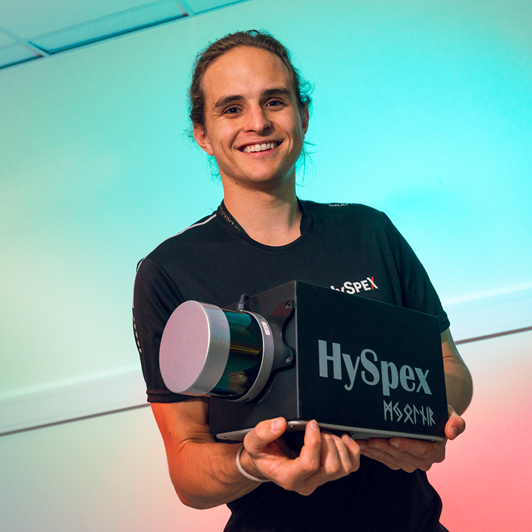

 Top-level specifications for hyperspectral imaging systems (such as number of spatial pixels, number of spectral bands, F#, frame rate, weight, and dimensions) may, at first sight, seem trivial to compare. However, as in the case of consumer cameras in which the number of megapixels, F#, and focal length does not tell you very much about how well the system actually performs, the previously mentioned top-level specifications are insufficient to thoroughly describe a hyperspectral system.
Top-level specifications for hyperspectral imaging systems (such as number of spatial pixels, number of spectral bands, F#, frame rate, weight, and dimensions) may, at first sight, seem trivial to compare. However, as in the case of consumer cameras in which the number of megapixels, F#, and focal length does not tell you very much about how well the system actually performs, the previously mentioned top-level specifications are insufficient to thoroughly describe a hyperspectral system.
A problem faced by many users is the following:
At the time of purchase, their knowledge about hyperspectral instrument hardware is limited (despite a high level of expertise in e.g. spectroscopy or hyperspectral data processing). This, in combination with the lack of a common industry standard for measuring and documenting these instruments, may often lead to requirement specifications which do not discriminate properly between different instruments when it comes to many of the more subtle technical parameters that really count more than the top-level specifications. In many cases, price, therefore, becomes the main discriminant and for an advanced scientific instrument, this may not always give the best decision from a user perspective. The consequence of such a decision is however usually not apparent until the instrument has been in use for quite some time, and it is then impossible to change the decision.
This Buyer's Guide is intended as a help for researchers and others who consider investing in a hyperspectral imaging system, in order to learn a little bit about instrument parameters and other aspects that are not always covered in full on product data sheets and flashy brochures. It will hopefully provide some useful insight and guidance in order to ask relevant questions to potential suppliers, thus enabling a well-informed decision.
The hyperspectral buyers' guide is an ongoing development, and major revisions may be made based on feedback from customers and cooperation partners.
Contact us for the latest version.

 Top-level specifications for hyperspectral imaging systems (such as number of spatial pixels, number of spectral bands, F#, frame rate, weight, and dimensions) may, at first sight, seem trivial to compare. However, as in the case of consumer cameras in which the number of megapixels, F#, and focal length does not tell you very much about how well the system actually performs, the previously mentioned top-level specifications are insufficient to thoroughly describe a hyperspectral system.
Top-level specifications for hyperspectral imaging systems (such as number of spatial pixels, number of spectral bands, F#, frame rate, weight, and dimensions) may, at first sight, seem trivial to compare. However, as in the case of consumer cameras in which the number of megapixels, F#, and focal length does not tell you very much about how well the system actually performs, the previously mentioned top-level specifications are insufficient to thoroughly describe a hyperspectral system.
